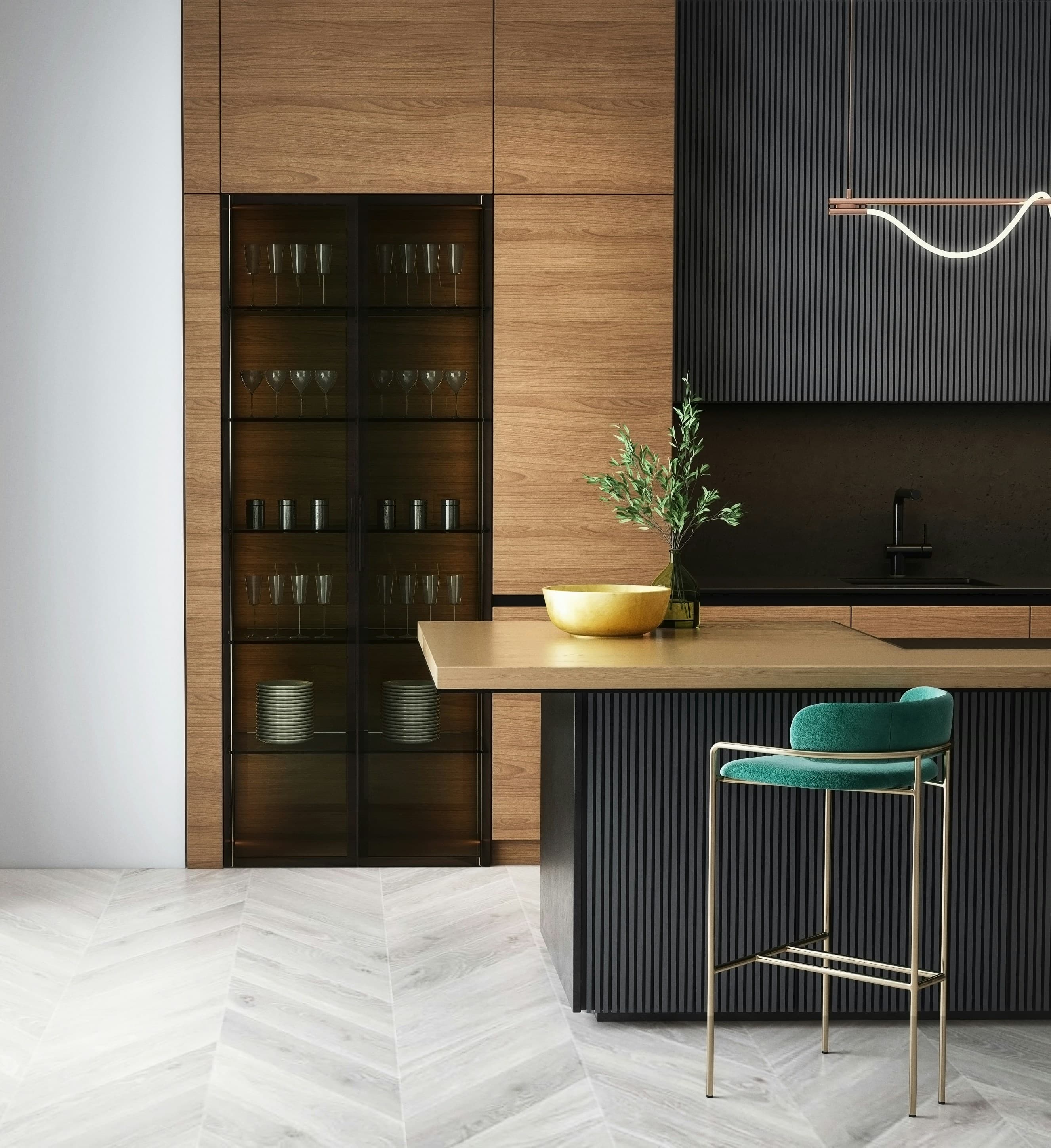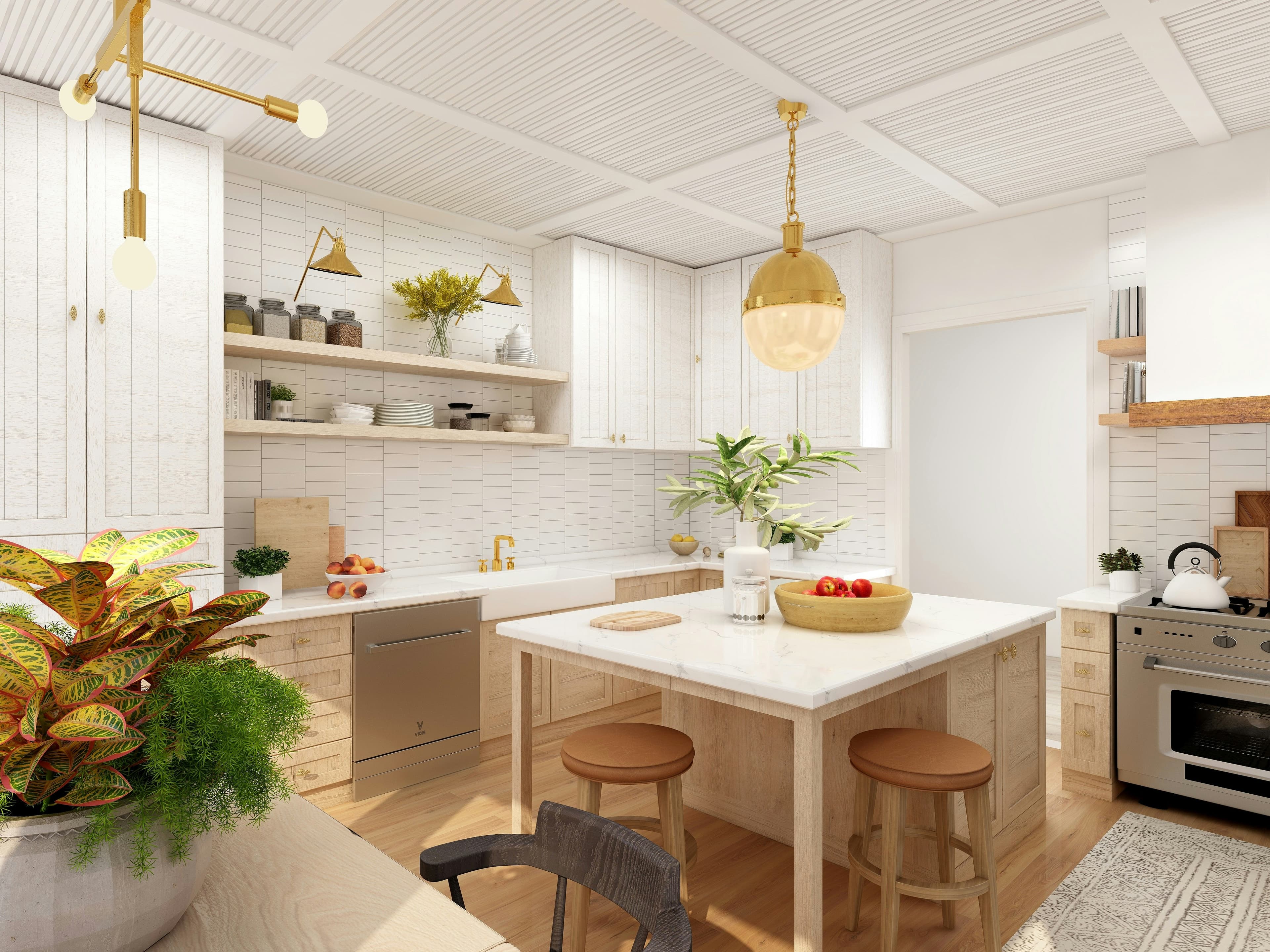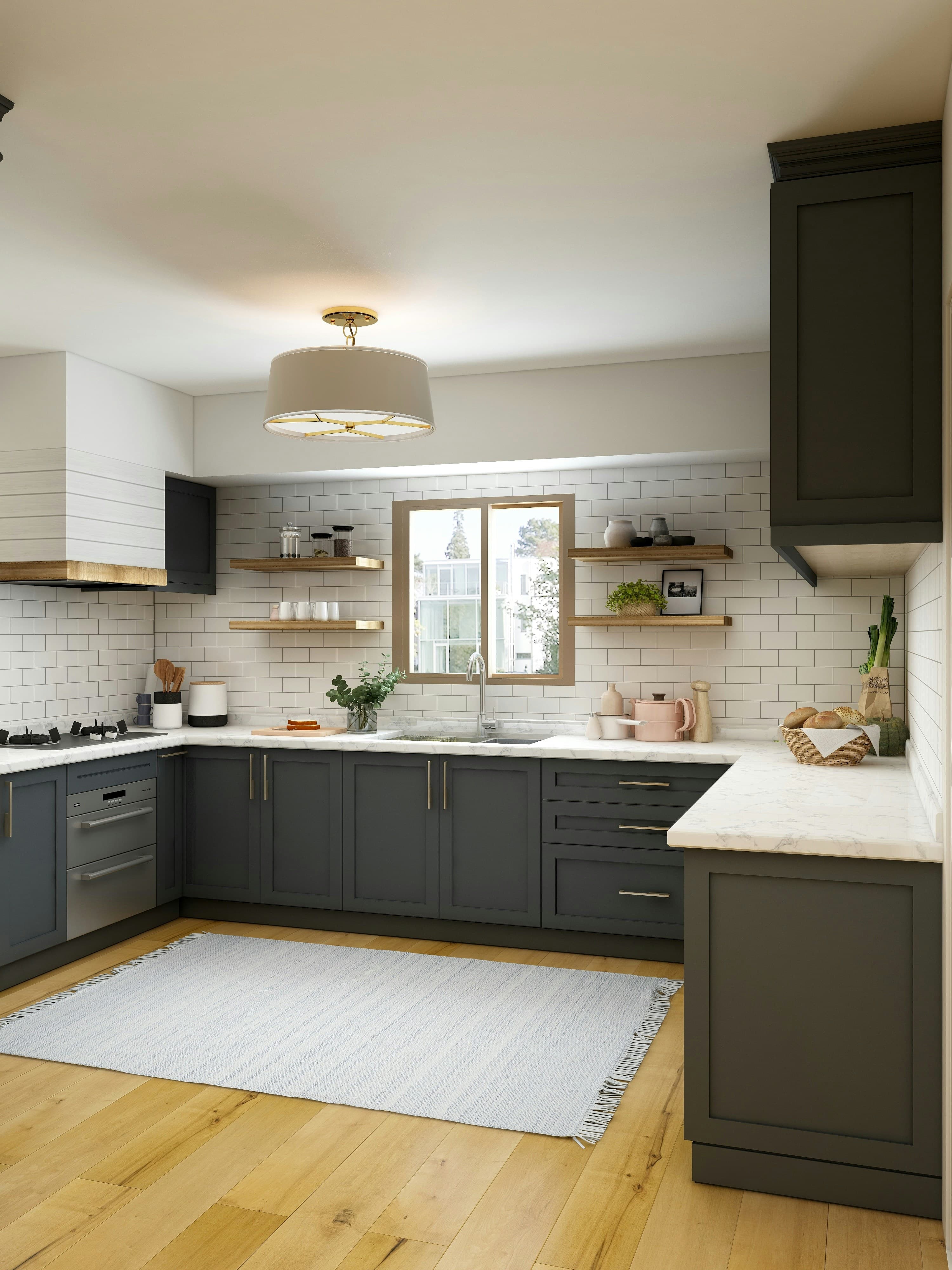
The Evolution of Kitchen Design
The kitchen has evolved from a purely functional space to the heart of the home—a place where families gather, memories are made, and culinary creativity flourishes. Modern kitchen design trends reflect this transformation, emphasizing both aesthetics and functionality while incorporating cutting-edge technology and sustainable practices.
Smart Technology Integration
Today's kitchens are becoming increasingly intelligent, with smart appliances and systems that enhance both convenience and efficiency. This technological evolution mirrors the AI revolution in mobile design, where technology serves to augment human capabilities rather than replace them. When planning your kitchen layout, it's essential to consider how smart technology will integrate with your workflow and space requirements.
Smart Kitchen Features:
- Voice-controlled appliances: Hands-free operation for busy cooks
- Smart refrigerators: Inventory tracking and recipe suggestions
- Automated lighting systems: Mood-based lighting that adapts to different activities
- Connected cooking devices: Precision temperature control and remote monitoring
Design Considerations for Smart Technology:
- Seamless integration: Technology should blend naturally with design aesthetics
- Accessibility: Smart features should be accessible to all users
- User experience: Intuitive interfaces that don't require extensive training
Sustainable and Eco-Friendly Materials
Sustainability is no longer a trend—it's a fundamental principle of modern kitchen design. This approach aligns with the sustainable design practices we see in digital products, where environmental consciousness drives innovation. For a comprehensive guide to sustainable kitchen design, including material selection and eco-friendly systems, explore our detailed resource on creating environmentally responsible kitchen spaces.
Sustainable Material Choices:
- Recycled materials: Countertops made from recycled glass and paper
- Bamboo and cork: Renewable resources for flooring and cabinetry
- Low-VOC finishes: Healthier indoor air quality
- Energy-efficient appliances: Reduced environmental impact
Benefits of Sustainable Design:
- Environmental responsibility: Reduced carbon footprint
- Health benefits: Better indoor air quality
- Long-term value: Sustainable materials often last longer
- Market appeal: Increasing demand for eco-friendly homes
Open Concept and Multi-Functional Spaces
The open-concept kitchen has become a defining feature of modern homes, reflecting the need for flexible, multi-functional spaces. This design philosophy shares principles with design systems in digital products, where components must work together harmoniously while serving multiple purposes.
Open Concept Benefits:
- Social interaction: Kitchens become gathering spaces for family and friends
- Natural light: Better flow of natural light throughout the space
- Flexibility: Easy adaptation for different activities and group sizes
- Entertainment: Seamless hosting and entertaining capabilities
Multi-Functional Design Elements:
- Kitchen islands: Serve as prep areas, dining spaces, and social hubs
- Convertible furniture: Tables that expand for different group sizes
- Hidden storage: Maximizing space efficiency while maintaining aesthetics
- Flexible seating: Adaptable arrangements for different occasions
Color and Material Trends
Modern kitchen design embraces a sophisticated color palette and material combinations that create visual interest while maintaining functionality. This approach to color and material selection follows principles similar to UX research methods, where user preferences and psychological responses guide design decisions.
Current Color Trends:
- Neutral foundations: Whites, grays, and beiges as base colors
- Accent colors: Bold blues, greens, and warm earth tones
- Monochromatic schemes: Sophisticated single-color variations
- Natural inspiration: Colors that reflect the outdoors
Material Combinations:
- Mixed metals: Combining different metal finishes for visual depth
- Natural stone: Marble, granite, and quartz for countertops
- Textured surfaces: Adding visual interest through texture
- Contrasting elements: Balancing smooth and textured surfaces
Storage and Organization Solutions
Effective storage design is crucial for maintaining a functional and beautiful kitchen. This requires careful planning and collaboration between designers and homeowners, ensuring that storage solutions meet specific needs and preferences. The principles of kitchen layout optimization are essential here, as storage must be integrated into the overall workflow and traffic patterns of your kitchen space.
Innovative Storage Solutions:
- Pull-out systems: Maximizing corner and deep cabinet space
- Vertical storage: Utilizing wall space for pots, pans, and utensils
- Hidden appliances: Concealing less attractive items behind cabinet doors
- Custom organizers: Tailored solutions for specific items and collections
Organization Principles:
- Zone planning: Grouping related items and activities together
- Accessibility: Ensuring frequently used items are easily reachable
- Visual hierarchy: Organizing items by importance and frequency of use
- Flexibility: Adapting storage as needs change over time
Lighting Design
Proper lighting is essential for both functionality and ambiance in modern kitchens. This aspect of kitchen design requires the same attention to detail as mobile design trends, where lighting affects both usability and user experience.
Layered Lighting Approach:
- Task lighting: Bright, focused light for food preparation areas
- Ambient lighting: General illumination for the overall space
- Accent lighting: Highlighting architectural features and decorative elements
- Natural light: Maximizing daylight through windows and skylights
Smart Lighting Features:
- Dimmable controls: Adjusting brightness for different activities
- Color temperature: Warm light for dining, cool light for cooking
- Motion sensors: Automatic lighting for convenience and energy efficiency
- Programmable settings: Customized lighting for different times and activities
Conclusion
Modern kitchen design represents a perfect blend of form and function, where aesthetics serve practical needs and technology enhances human experience. The trends we see in kitchen design—smart technology integration, sustainability, multi-functionality, and user-centered design—mirror the evolution we're witnessing in digital design.
By embracing these trends and principles, homeowners can create kitchens that are not only beautiful and functional but also adaptable to changing needs and lifestyles. The key is to approach kitchen design with the same user-centered mindset that drives successful UX research and design system development.
The future of kitchen design lies in creating spaces that serve as the heart of the home while incorporating the latest technology and sustainable practices. This approach ensures that kitchens remain relevant and valuable for years to come, just as well-designed digital products continue to serve users effectively over time.

